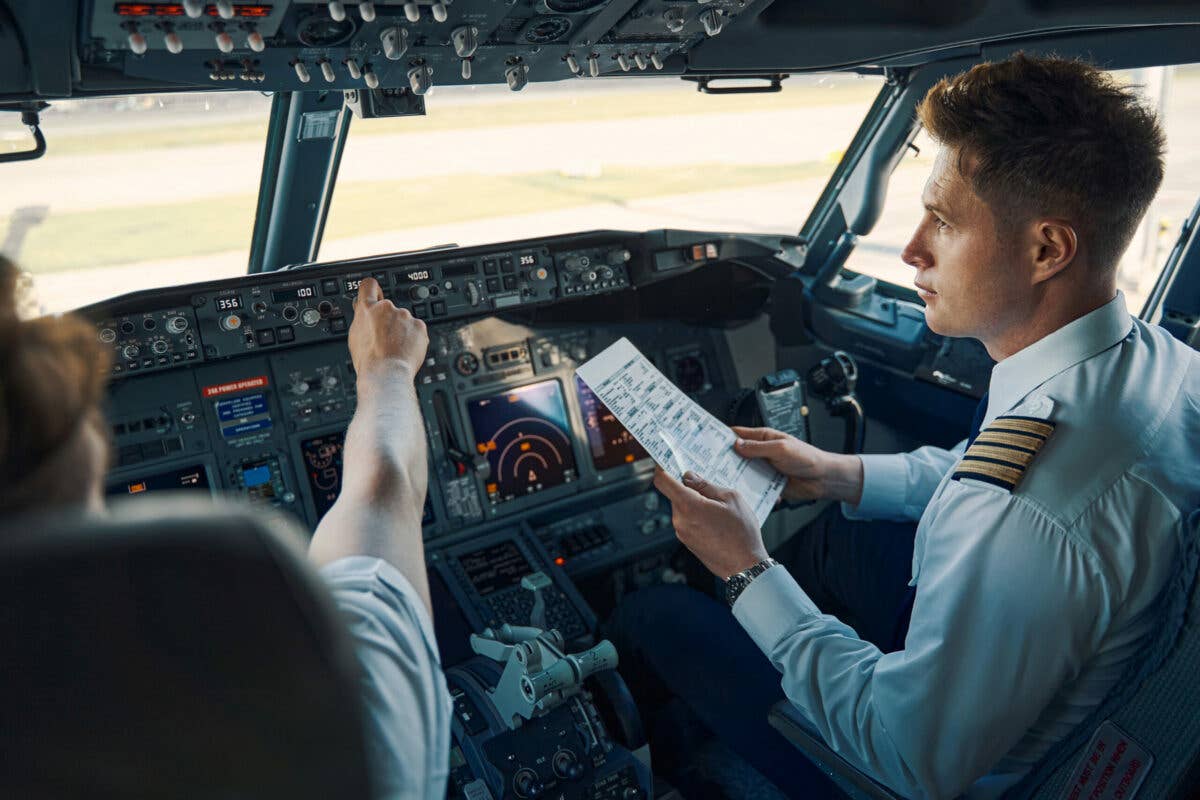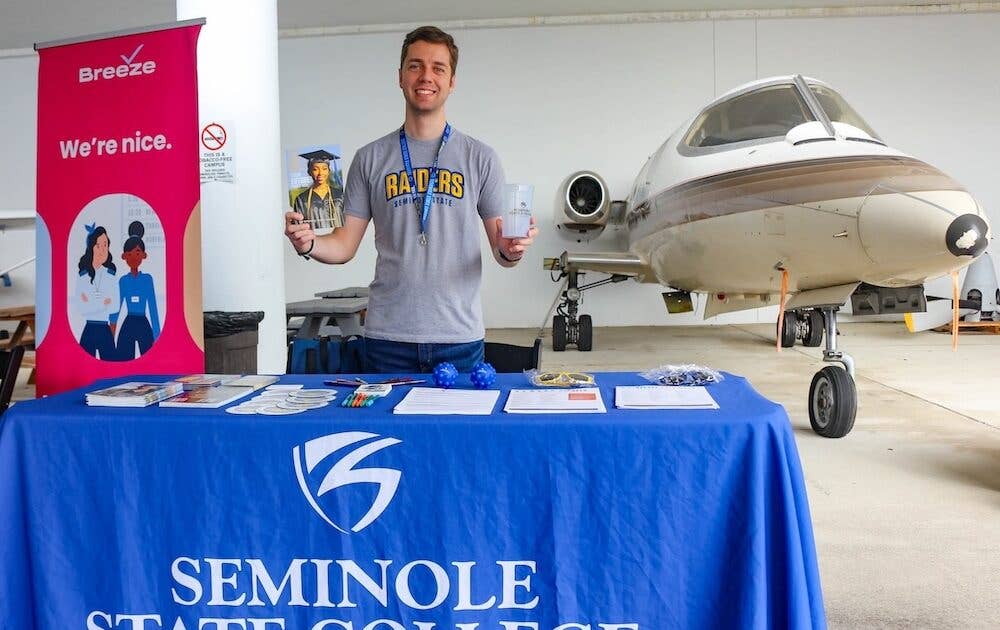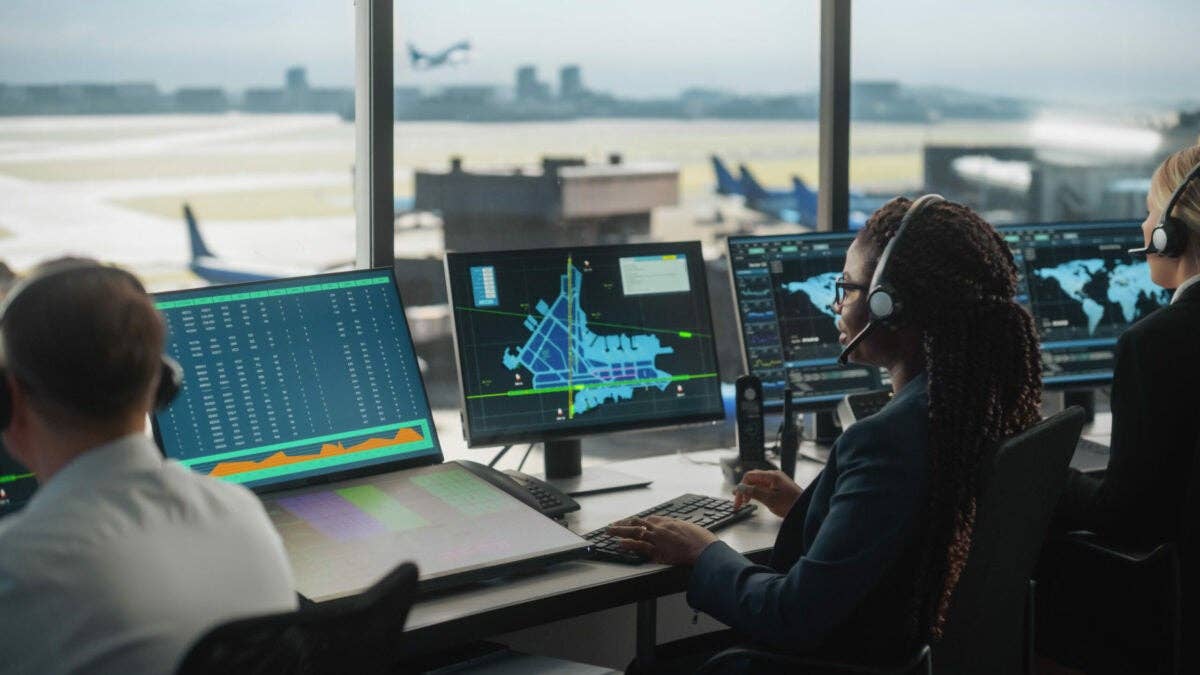3 Tech Skills That Will Help Your Aviation Inspector Career
Understanding the latest innovations and safety regulations is key to becoming a successful aviation inspector.

Aviation inspectors earn an average yearly salary of $77,533. Wages can range from $35,342 and go up to $170,090. [Adobe Stock photo]
My first role in the aerospace industry was as a product line manager for a company that manufactured various aircraft components.
At the time, I had a limited background in aerospace. One of the first things I learned was the importance, and often panic, associated with Aircraft On Ground (AOG) situations. If you are unfamiliar with this term, it means the aircraft cannot be flown until an aviation inspector has approved it for flight again.
Many of our clients were wealthy individuals with multimillion dollar private jets. In one case, shortly after I began working at the company, a leaking faucet we manufactured had caused an AOG on a client's jet. To make matters worse, it was New Year's Eve. I was in Las Vegas at the time, alone in my hotel room. I tried to frantically coordinate a remedy to the issue on my laptop as the rest of the city counted down the final seconds to midnight. It was that important.
Aviation inspectors are integral to resolving AOG situations efficiently and safely, minimizing operational disruptions for airlines and ensuring passenger safety in the air. Like any field in the aerospace industry, technology continues redefining aviation inspectors' roles and capabilities.
For those already in this career or anyone looking to become an aviation inspector, understanding the latest innovations and safety regulations in this space is vital if you wish to be successful.
What’s Needed to Become Certified as an Aviation Safety Inspector?
Recent events in the aerospace industry continue to prove the need for Aircraft Safety Inspectors (ASIs). Without these tireless professionals, it is unlikely that air operations would continue without a significant increase in safety incidences.
ASI Pathways
ASIs work within four specialty areas: avionics, manufacturing, maintenance, and operations. There is no specific path ASIs follow. One's path to becoming an ASI combines education, training, and real-world experience. There are five categories to which each ASI must have some exposure:
- Educational background
- Certifications (A&P, IA)
- Experience requirements
- Physical and personal attributes
- Ongoing training and education
Education Requirements
If you are interested in this position, you will need a solid educational foundation. A high school diploma or equivalent is the minimum requirement.
However, having an associate's or bachelor's degree in aviation, aerospace engineering, or a related field will make you a more attractive candidate when applying to aircraft inspector job openings. Coursework in subjects such as physics, mathematics, and aeronautics is highly sought after.
Higher education not only provides the technical knowledge necessary for the role but also demonstrates a commitment to the field of aviation.
Certification Requirements
ASIs must hold specific certifications to qualify for the position.
The most important of these are the Airframe and Powerplant (A&P) certification and the Inspection Authorization (IA). The A&P certification is issued by the Federal Aviation Administration (FAA) and allows an individual to work on aircraft engines and structures.
The IA certification, also issued by the FAA, enables the holder to conduct in-depth inspections and sign off on major repairs and alterations. These certifications ensure that ASIs have the necessary skills and knowledge to maintain and evaluate aircraft safety.
Work Experience
Experience in the aviation industry is extremely important if you want to be an ASI.
Candidates typically need at least three years of relevant work experience. You can fulfill this expectation by working as an aircraft mechanic, repair technician, maintenance supervisor, or similar occupations.
This hands-on experience provides a practical understanding of aircraft operations, mechanical repair and maintenance records, and safety protocols.
Physical and Mental Health
In addition to education and experience, ASIs must have the physical and personal attributes to perform their duties effectively.
Good physical health and the ability to pass a rigorous medical examination are essential, as the job often involves climbing, crawling, and working in confined spaces. Personal attributes such as attention to detail, analytical thinking, and strong communication skills are also crucial.
Inspectors must be able to identify potential safety issues and convey their findings clearly and concisely. Those without a backbone need not apply.
Professional Development
Finally, the aerospace industry is constantly evolving, and ongoing training and education are vital for ASIs to stay current with industry advancements.
Continuous professional development through FAA training programs, workshops, online classes, and seminars ensures that inspectors remain up-to-date with the latest safety standards, technologies, and regulatory changes.
How Aircraft Inspection Careers Are Changing
New technology significantly impacts ASIs by enhancing their ability to maintain aircraft safety and regulatory compliance.
Advanced diagnostic tools and software systems allow inspectors to perform more precise and efficient inspections. Drones and augmented reality (AR) are being used for detailed examinations of aircraft components, reducing the need for manual inspections in hard-to-reach areas.
Data analytics and artificial intelligence (AI) are helping predict maintenance needs and identify potential safety issues before they become critical. This improves overall safety and operational efficiency in the aviation industry. These are amazing innovations, but they also require ASIs to never stop learning.
3 Technologies Impacting Aviation Inspector Jobs
Integrating new technologies into the world of aircraft inspections is transforming the role of ASIs.
New innovations are enhancing inspection capabilities, improving efficiency, and ensuring higher safety standards. Three of the most promising advancements are listed below:
- Drones
- Nondestructive Testing (NDT)
- Internet of Things (IoT)
Let's explore the use of these technologies and what ASIs will need to do to get the most out of them.
Drones
Drones have revolutionized inspections in aerospace. They provide an efficient solution for conducting inspections that are often challenging or dangerous for humans.
Equipped with high-resolution cameras and sensors, drones can capture detailed images and data from hard-to-reach areas, enabling thorough inspections without the need for scaffolding or heavy machinery.
The primary benefits of drone-aided aircraft inspections include increased safety, cost savings, and time efficiency. Drones minimize the need for human inspectors to work in hazardous environments, reducing the risk of accidents. They also significantly lower the costs associated with traditional inspection methods.
Additionally, drones can cover large areas quickly, providing real-time data and allowing for faster decision-making. It is not uncommon for drones to cut aircraft inspection times down by several hours.
Drone-Specific Skills
For ASIs or ASI hopefuls looking to utilize drones, you'll need the following skills.
- Drone piloting: While many inspection drones use autonomy to conduct inspections, you will still need to be a proficient drone pilot.
- Data analysis and interpretation: Inspectors must be able to analyze and interpret the data and images collected by drones, identifying potential issues and making informed recommendations.
- Regulatory knowledge: Understanding the regulations governing drone use is important to ensure compliance with local and federal laws. ASIs using drones are considered commercial users by the FAA.
Certifications Needed to Pilot Drones
Current regulations require commercial drone pilots to have the proper certification and training. At minimum, ASIs need to have the following.
- Part 107 certification: In the U.S, commercial drone operators must obtain the FAA's Part 107 certification, which involves passing a knowledge test on airspace rules and regulations. Obtaining a Part 107 is relatively easy. Utilizing one of the many online training courses, such as those provided by Altitude University and the Pilot Institute, is a great place to start this journey.
- Specialized aviation drone courses: Additional specialized courses provide training in advanced drone operations, data analysis, and specific industry applications.
The field of drone-based inspections offers numerous career opportunities. ASIs with this skill set will likely see increased value in their field.
The growing demand for drone technology ensures a promising future for those with the right skills and certifications. ASIs could find work in flying drones for these inspections, consulting for drone-based inspections, and analyzing the data collected by drones.
Nondestructive Testing (NDT)
NDT is an important aspect of aviation maintenance, ensuring the integrity and safety of aircraft without causing damage. NDT methods allow for the detection of flaws, cracks, and other defects in aircraft components, which are essential for maintaining high safety standards.
Recent advancements in NDT technologies have significantly enhanced their applications in aviation. Techniques such as ultrasonic testing, eddy current testing, and radiographic testing are now complemented by more advanced methods like Phased Array Ultrasonic Testing (PAUT), digital radiography, and infrared thermography.
These technologies provide detailed insights into the structural health of aircraft, enabling early detection and preventive maintenance.
NDT-Specific Skills
ASIs will need to understand the following if NDT interests them:
- Understanding of various NDT methods: Professionals must be well-versed in different NDT techniques and their specific applications.
- Data interpretation: Analyzing and interpreting data accurately to identify potential issues is crucial.
- Knowledge of materials and structures: A deep understanding of the materials and structural components used in aircraft is essential for effective NDT.
Certifications Needed for NDT
Like drone-based inspections, NDT requires additional training and certification. Certification levels are the primary requirement.
- NDT certification levels: NDT professionals must achieve various certification levels (Level I, II, and III), each requiring specific training and experience. Level III is the highest. Those with Level III certification can train those seeking Level I and II certifications.
- Specialized aviation NDT courses: Courses focused on aviation-specific NDT methods and applications are important for gaining the necessary expertise in this field.
The field of advanced NDT offers numerous career opportunities. Roles include NDT technicians, NDT engineers, quality control inspectors, and NDT trainers. These positions are available in airlines, aircraft manufacturing companies, maintenance, repair, and overhaul (MRO) organizations, and regulatory bodies.
The growing emphasis on safety and preventive maintenance in aviation ensures ASIs skilled in NDT will be in high demand.
IoT and Sensors
IoT and related sensors have transformed aviation maintenance by enabling continuous monitoring and real-time data collection from aircraft systems. These technologies provide critical insights into the operational status of aircraft components, enhancing maintenance efficiency and safety.
IoT plays a pivotal role in predictive maintenance and real-time monitoring. Sensors installed on aircraft components collect data on various parameters like temperature, pressure, and vibration. This data is transmitted in real-time to maintenance teams, allowing for early detection of potential issues and enabling predictive maintenance strategies.
As a result of these sensors, unscheduled downtimes are minimized, and maintenance costs are reduced.
IOT-Specific Skills
ASIs interested in understanding the numerous IoT systems and sensors will need to familiarize themselves with the following:
- Understanding of sensor types and data: Professionals must be familiar with different sensor types and their specific applications in aircraft systems.
- Basic programming and data analysis: Knowledge of programming languages and data analysis techniques is essential for processing and interpreting sensor data.
- Systems integration knowledge: Understanding how to integrate IoT systems with existing aircraft maintenance infrastructure is crucial for effective implementation.
Certifications for IOT
While not a requirement, given the speed at which these technologies are evolving, obtaining certifications and extra training is a good idea. These include the following:
- IoT certifications: Obtaining certifications in IoT technologies equips professionals with the skills needed to deploy and manage IoT systems.
- Data analysis courses: Courses in data analysis provide the necessary skills to interpret sensor data and make informed maintenance decisions.
The integration of IoT and sensors in aviation maintenance has created numerous career opportunities. Roles include IoT engineers, sensor data analysts, and systems integration specialists.
The industry increasingly relies on advanced technologies to enhance safety and efficiency. This means the aforementioned positions are in high demand within airlines, aircraft manufacturers, and maintenance organizations.
Prepare for Your Airplane Inspection Career to Take Flight
ASIs are vital for maintaining safety and efficiency. Emerging technologies like drones, NDT, and the IoT are transforming their roles. Drones enhance safety and efficiency, while NDT offers detailed structural insights. IoT enables real-time monitoring.
To leverage these innovations, aviation inspectors must acquire additional skills and training in drone operation, advanced NDT techniques, and IoT systems integration.
Continuous professional development in these areas ensures inspectors remain effective and up-to-date, opening new career opportunities in aviation maintenance and inspection.
FAQ
How long does it take to become an aviation inspector?
When you factor in all the education, it can take six to 10 years. This includes two to four years of education, three to five years of relevant experience, and additional time for certifications and on-the-job training.
How much do aviation inspectors make in the US?
Aviation inspectors earn an average yearly salary of $77,533. Wages can range from $35,342 and go up to $170,090. Generally, the more specialized an individual’s training and experience, the higher the wages.
What career cluster is an aviation inspector in?
Of the 16 career clusters, Aviation Safety Inspector falls within the transportation, distribution and logistics cluster.

Sign-up for newsletters & special offers!
Get the latest FLYING stories & special offers delivered directly to your inbox






